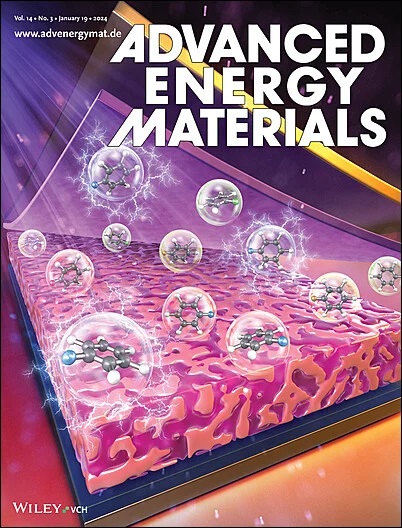Advanced Cellulose‐Derived Hard Carbon as Anode for Sodium‐Ion Batteries: Mechanisms, Optimization, and Challenges
IF 24.4
1区 材料科学
Q1 CHEMISTRY, PHYSICAL
引用次数: 0
Abstract
Hard carbon materials are regarded as the most promising negative electrode materials for commercial sodium‐ion batteries. As the most abundant bioresource in nature, cellulose has unique fiber structure and multifunctional groups, is considered to be appropriate precursor for the preparation for hard carbon. The present review comprehensively elaborates on the mechanism of sodium storage and different preparation methods of cellulose‐derived hard carbon, explores different microstructures of cellulose‐derived hard carbon for sodium storage and electrochemical performance in sodium ion batteries, proposes corresponding treatment methods to improve the electrochemical performance targeted at precursors of cellulose‐based materials. This review also presents an update on development of electrochemical performance for cellulose‐derived hard carbon in SIBs, figures out the achievements and shortcomings in the advanced study of cellulose‐derived hard carbon. Meanwhile, the relationship between electrochemical performance and microstructure of cellulose‐derived hard carbon obtained from different precursors and preparation methods is systematically summarized through theoretical calculations and characterization analyses. Additionally, the critical issues, challenges, and trends of cellulose‐derived hard carbon in SIBs for commercialization in future are discussed.

求助全文
约1分钟内获得全文
求助全文
来源期刊

Advanced Energy Materials
CHEMISTRY, PHYSICAL-ENERGY & FUELS
CiteScore
41.90
自引率
4.00%
发文量
889
审稿时长
1.4 months
期刊介绍:
Established in 2011, Advanced Energy Materials is an international, interdisciplinary, English-language journal that focuses on materials used in energy harvesting, conversion, and storage. It is regarded as a top-quality journal alongside Advanced Materials, Advanced Functional Materials, and Small.
With a 2022 Impact Factor of 27.8, Advanced Energy Materials is considered a prime source for the best energy-related research. The journal covers a wide range of topics in energy-related research, including organic and inorganic photovoltaics, batteries and supercapacitors, fuel cells, hydrogen generation and storage, thermoelectrics, water splitting and photocatalysis, solar fuels and thermosolar power, magnetocalorics, and piezoelectronics.
The readership of Advanced Energy Materials includes materials scientists, chemists, physicists, and engineers in both academia and industry. The journal is indexed in various databases and collections, such as Advanced Technologies & Aerospace Database, FIZ Karlsruhe, INSPEC (IET), Science Citation Index Expanded, Technology Collection, and Web of Science, among others.
 求助内容:
求助内容: 应助结果提醒方式:
应助结果提醒方式:


